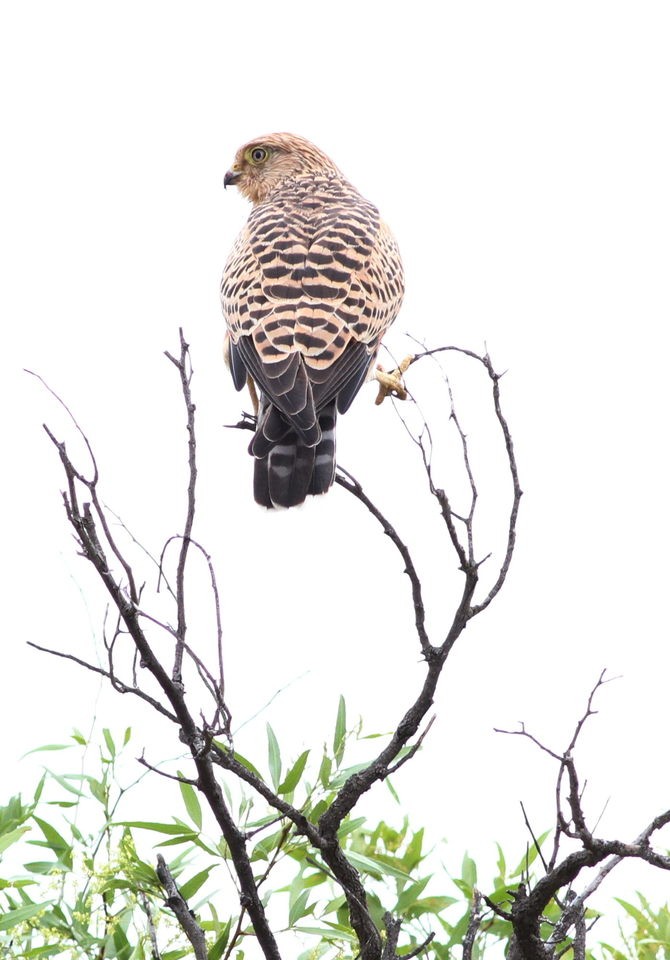Greater Kestrel
A species of True Falcons Scientific name : Falco rupicoloides Genus : True Falcons
Greater Kestrel, A species of True Falcons
Botanical name: Falco rupicoloides
Genus: True Falcons
Content
Description General Info
Description
The plumage of the adult is mainly pale rufous, both above and below. The back, upperwing and flanks are barred with black. The breast has dark streaks and the head is streaked but has no malar stripe unlike the common and lesser kestrels. The rump and tail are grey with black bars; the tail has a white tip. In flight, the whitish underwing contrasts with the darker body. The iris of the eye is whitish, distinguishing the bird from any similar species. The bill is mainly blue-grey and the feet and cere are yellow. Juvenile birds have rufous instead of grey on the tail, streaked flanks and a dark eye. The bird is 29–37 cm (11–15 in) long with a wingspan of 68–84 cm (27–33 in) The southern subspecies F. r. rupicoloides weighs about 181–334gr (.400–.736 lb). The form F. r. arthuri is smaller, weighing about 165–252gr (.364–.556 lb). The northern subspecies F. r. fieldi is also small and is paler than the others. The species is usually silent but has a shrill, repeated call. 
Size
37 cm
Life Expectancy
6 years
Nest Placement
Cliff
Feeding Habits
Greater Kestrel predominantly consumes invertebrates like grasshoppers, termites, beetles, and solifugids. They also eat lizards, small birds, mammals, and snakes. Utilizing perch hunting and hovering tactics, greater Kestrel captures prey mostly on the ground and is known to exploit wildfires to seize fleeing animals. Surplus food may be stored under vegetation or stones.
Habitat
The greater Kestrel is typically found in arid, open regions including grasslands, savannas, and semi-deserts, often associated with scattered acacia trees. Its favored terrain has ground cover less than 50 cm high. This species inhabits broad geographic expanses at elevations from sea level to 2150 m, with a preference for altitudes between 800 and 1800 m. Habitats contain sparse vegetation, semi-desert scrub, and short grasslands with the occasional presence of trees and bushes utilized for roosting and nesting.
Dite type
Carnivorous
General Info
Feeding Habits
Bird food type
Species Status
Not globally threatened.
Scientific Classification
Phylum
Chordates Class
Birds Order
Diurnal Birds of Prey Family
Falcons and caracaras Genus
True Falcons Species
Greater Kestrel 